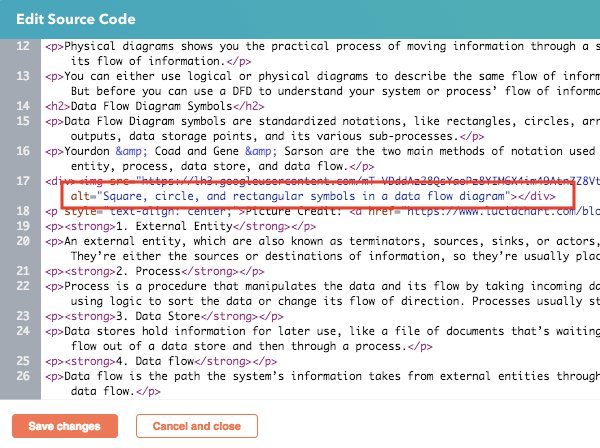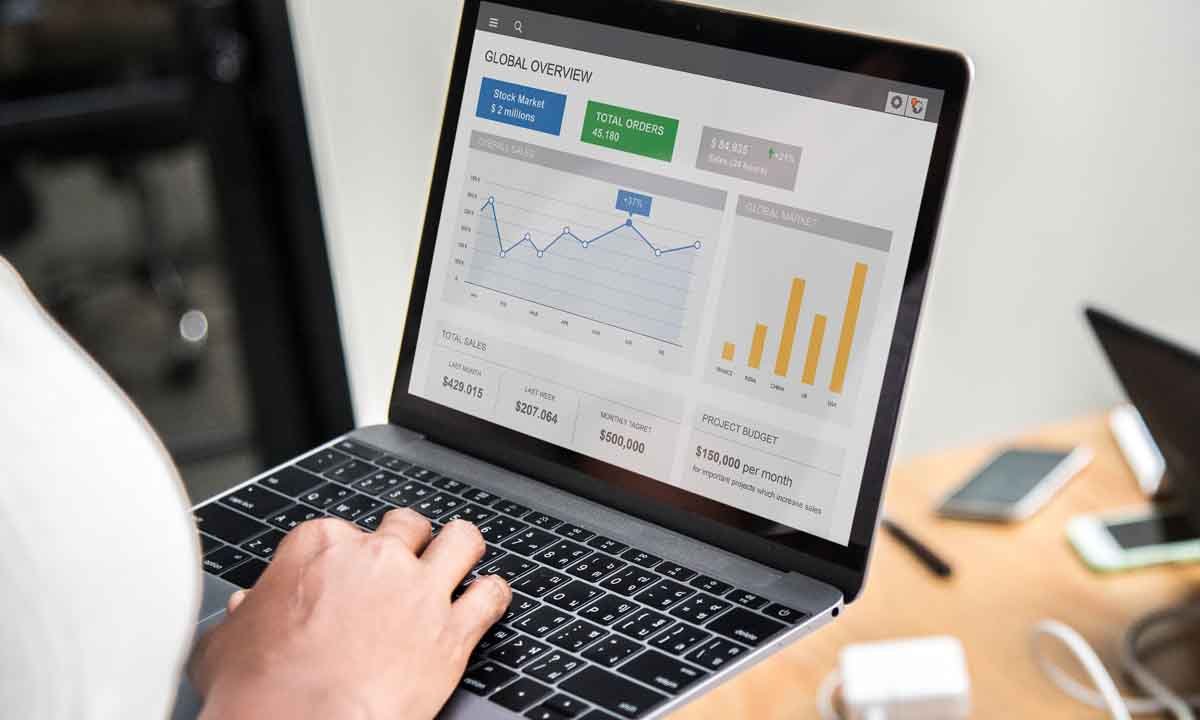Infographics are an appealing and succinct way to deliver information to your target audience. When made correctly, they have the ability to turn information that can be tedious to read into a compelling, easily digestible package. When you are ready to post your infographic to your website, you should ensure you’re using the correct SEO techniques to maximize its reach. As always, having your content seen by as many people as possible is the goal.
The Basics of Keyword Tags
Google and other search engines cannot read text from images. Simply including keywords in your image’s text does not affect search results. Although infographics lack many of the text and keyword opportunities that a blog post offers, there are several crucial places for keywords that will ensure your content reaches the widest audience possible.
Title
The title, or file name of your image, should contain your identified keywords. Google and other search engines scan your image’s file name for clues to categorize the image appropriately. Including a relevant title is key to helping the search engine identify what your content is about.
Alt text
The alt text, or description of your image, is also key in allowing a search engine to determine what your image is about. Your alt text description should be straight to the point while including your relevant keywords. Try to be as specific as possible to help connect with those who will find your information valuable. If your infographic is focused on the diet of parrots, do not generalize by writing “bird food”.

Header tags
While the infographic itself cannot be read by search engines, the page of your website that you display it on, can. Using your h1 header tags to further identify your image to the search engines will increase the likelihood that it is shown when users search for the relevant keywords. Header tags are arguably the most important factor in SEO.
Supporting text
Supporting text is placed under your h1 header and serves two purposes. A brief introductory paragraph placed above your image gives the reader an introduction to what they will be learning about. It also gives search engines further text to analyze in their quest to identify what your content’s subject is.
The following pages by Kelly-Moore Paints or LinkedIn Marketing Solutions Blog are good examples of supporting text.
Article URL
The URL of your article is also considered by search engines. Ensure that the page URL of your website that hosts your image contains relevant and identifying keywords.
Meta Descriptions
A meta description is a text that appears just below your search result. It is a very brief summary of what the website contains. While this text is not specifically used to rank websites or images, it is still important. If you are successful in your SEO efforts, and your links are appearing for your target demographic, the meta description can be the difference between a site visit and you losing out on that user’s traffic. Try to write a compelling meta description that will tempt users to click your link for more information.

Source: MOZ
Load time
Search engines consider load time when assessing where to rank your web page containing your infographic. Since images are much larger than text, they make more of an impact on website load times. A slow load time makes users less likely to visit your website. Typical site visitors expect a website to load in 2 seconds or less, and 60% of visitors will leave your website if it does not load in 3 seconds. Once they leave your site, 80% of these visitors will remember that your site is slow, and avoid it in the future.
Google provides a website to check the load times of various pages on your site. You can use Google’s PageSpeed Insights developer tool to gain actionable steps on how to fix slow load times.
Link building
Infographics are fun. They catch your eye and relay information in a unique way. Digital Information World reports that infographics are 30 times more likely to be read in full than a normal article due to their engaging nature. Visual content is 3 times more likely to be shared across social media than text articles alone. Images containing useful information are great for link building.
Embed codes
Having an embed code set up for easy sharing of your infographic increases inbound links and traffic to your website. Inbound links are arguably the most important link type when viewed by a search engine. This type of link indicates that other people in your space find your content accurate or enjoyable enough to share it with others. Search engines view this as someone vouching for you and saying, “this is good content”. Embed codes also allow simple and direct sharing to social media sites.
A Unique Benefit
If you’ve created a great infographic on a specific topic, it is likely to be shared among those who are involved in your niche. Your image can be used on related websites as an addition to the creator’s writing. While it is heavily frowned upon to copy someone’s article and place it on your site, it is encouraged to use infographics this way as long as you give the creator credit. If you have included embed links on your own site, you are well on your way to increasing the number of inbound links from other relevant sites.
Social Media
Social media shares are not directly considered in SEO, but they can be critical to increasing brand awareness and driving new traffic to your site. Statista reports that 91% of companies utilize social media in their marketing strategies despite it not factoring into search ranking outcomes. These companies know that users spend almost 2.5 hours on social media each day and aim to engage users where they spend the most time.
Creating a compelling piece of informative art that encourages sharing will put your brand in front of more people.
Influencers
Social media influencers do exactly what the name suggests. For better or worse, they have power and influence over the group of people that follow them. If you can create a piece of content that lends itself to being shared by an influencer in your space, you have the potential for your content to reach millions of people it otherwise would not. Try to get your content noticed by these people.
Share Away
Now that you have your infographic fully aligned with SEO best practices, start sharing and see where it takes you!
Infographics are an appealing and succinct way to deliver information to your target audience. When made correctly, they have the ability to turn information that can be tedious to read into a compelling, easily digestible package. When you are ready to post your infographic to your website, you should ensure you’re using the correct SEO techniques to maximize its reach. As always, having your content seen by as many people as possible is the goal.
The Basics of Keyword Tags
Google and other search engines cannot read text from images. Simply including keywords in your image’s text does not affect search results. Although infographics lack many of the text and keyword opportunities that a blog post offers, there are several crucial places for keywords that will ensure your content reaches the widest audience possible.
Title
The title, or file name of your image, should contain your identified keywords. Google and other search engines scan your image’s file name for clues to categorize the image appropriately. Including a relevant title is key to helping the search engine identify what your content is about.
Alt text
The alt text, or description of your image, is also key in allowing a search engine to determine what your image is about. Your alt text description should be straight to the point while including your relevant keywords. Try to be as specific as possible to help connect with those who will find your information valuable. If your infographic is focused on the diet of parrots, do not generalize by writing “bird food”.

Header tags
While the infographic itself cannot be read by search engines, the page of your website that you display it on, can. Using your h1 header tags to further identify your image to the search engines will increase the likelihood that it is shown when users search for the relevant keywords. Header tags are arguably the most important factor in SEO.
Supporting text
Supporting text is placed under your h1 header and serves two purposes. A brief introductory paragraph placed above your image gives the reader an introduction to what they will be learning about. It also gives search engines further text to analyze in their quest to identify what your content’s subject is.
The following pages by Kelly-Moore Paints or LinkedIn Marketing Solutions Blog are good examples of supporting text.
Article URL
The URL of your article is also considered by search engines. Ensure that the page URL of your website that hosts your image contains relevant and identifying keywords.
Meta Descriptions
A meta description is a text that appears just below your search result. It is a very brief summary of what the website contains. While this text is not specifically used to rank websites or images, it is still important. If you are successful in your SEO efforts, and your links are appearing for your target demographic, the meta description can be the difference between a site visit and you losing out on that user’s traffic. Try to write a compelling meta description that will tempt users to click your link for more information.

Load time
Search engines consider load time when assessing where to rank your web page containing your infographic. Since images are much larger than text, they make more of an impact on website load times. A slow load time makes users less likely to visit your website. Typical site visitors expect a website to load in 2 seconds or less, and 60% of visitors will leave your website if it does not load in 3 seconds. Once they leave your site, 80% of these visitors will remember that your site is slow, and avoid it in the future.
Google provides a website to check the load times of various pages on your site. You can use Google’s PageSpeed Insights developer tool to gain actionable steps on how to fix slow load times.
Link building
Infographics are fun. They catch your eye and relay information in a unique way. Digital Information World reports that infographics are 30 times more likely to be read in full than a normal article due to their engaging nature. Visual content is 3 times more likely to be shared across social media than text articles alone. Images containing useful information are great for link building.
Embed codes
Having an embed code set up for easy sharing of your infographic increases inbound links and traffic to your website. Inbound links are arguably the most important link type when viewed by a search engine. This type of link indicates that other people in your space find your content accurate or enjoyable enough to share it with others. Search engines view this as someone vouching for you and saying, “this is good content”. Embed codes also allow simple and direct sharing to social media sites.
A Unique Benefit
If you’ve created a great infographic on a specific topic, it is likely to be shared among those who are involved in your niche. Your image can be used on related websites as an addition to the creator’s writing. While it is heavily frowned upon to copy someone’s article and place it on your site, it is encouraged to use infographics this way as long as you give the creator credit. If you have included embed links on your own site, you are well on your way to increasing the number of inbound links from other relevant sites.
Social Media
Social media shares are not directly considered in SEO, but they can be critical to increasing brand awareness and driving new traffic to your site. Statista reports that 91% of companies utilize social media in their marketing strategies despite it not factoring into search ranking outcomes. These companies know that users spend almost 2.5 hours on social media each day and aim to engage users where they spend the most time.
Creating a compelling piece of informative art that encourages sharing will put your brand in front of more people.
Influencers
Social media influencers do exactly what the name suggests. For better or worse, they have power and influence over the group of people that follow them. If you can create a piece of content that lends itself to being shared by an influencer in your space, you have the potential for your content to reach millions of people it otherwise would not. Try to get your content noticed by these people.
Share Away
Now that you have your infographic fully aligned with SEO best practices, start sharing and see where it takes you!













